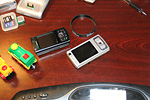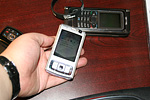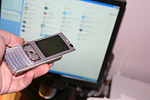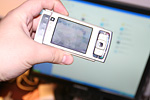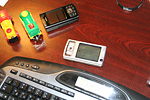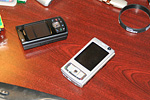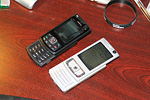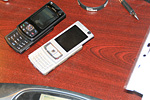|
|
Review of Nokia N95 – camera. Stills and video
Live photos of Nokia N95
Whereas in the first installment of the review our only focus was the music department, now we are examining the handset’s imaging capabilities, thankfully there is a credible reason for that, for the N95 is one of the first popular phone sporting a 5 Mpix camera unit onboard. The LG’s offering, as well as others akin to it, are not the options due to poor prevalence. As a matter of fact, we could even say that Nokia N95 shows the way the forthcoming handsets will look – over at Nokia they call it a convergent device, although we would rather call it a cross.
Nokia’s designers have absorbed almost all solutions employed by Sony Ericsson’s very own CyberShot series, adapted them and made a number of tweaks. This trend has been around for a couple of products right now, and there is nothing bad about it – the only thing that matters is that in the end consumers get a fetching offering. The phone features the now-standard dual user interface, meaning that in camera mode the screen is shown in landscape orientation while you hold it sideways, like you normally do that with any stand-alone camera. Thanks to its large diagonal measuring 2,6 inches from corner to corner, it bears striking resemblance to a digital camera. Here is an example I came up with after having a trip lately. While a decent yet large camera was hanging on my shoulder, I had Nokia N95 in my pocket, and the fact is, most shots back then were taken with the N95. Sounds ridiculous, doesn’t it? But in truth that vast majority of snaps were more of memorable scenes that I would think about or call up in my mind some day. I didn’t need top quality at all. It is quite another matter though, that nobody says that Nokia N95’s size is uncannily matched to compact digital cameras. The designers call upon our previous experience, as all of us actually can manage such devices, and they don’t put anybody off. And what is more, portable compacts as a rule weight more due to all metal casings, however the N95 boasts fair size/weight ratio. I may say with confidence that Nokia N95 provides users with experience utterly identical to what they have had before. Facing off Nokia N95 against Sony Ericsson K800, in terms of ergonomics, Nokia’s solution is a step closer to stand-alone digital cameras – it is all about display and shell size, these are the aspects that shape our impressions. It wouldn’t be the wrong thing to compare it with Nokia N73, as nothing has changed, neither the layout nor the rest. But again Nokia N95 allows us to apply the experience of handling digital cameras, whereas having a keypad Nokia N73 doesn’t share that general looks with stand-alone portable compacts. One could say that the above facts have a little to do with the handset’s abilities and don’t deserve being put into the limelight, but to me, these tiny details create what they call user experience and make people attached to a particular product.

The phone carries two cameras – the forward-facing QVGA unit can be activated via the menu, while the main camera starts up automatically once you open the shutter. This might be a potential problem, as should this mechanism break down, then you won’t be able to use the main camera. Though, this is the least possible scenario. The shutter covering the lens consists of two halves that barely touch each other, allowing for dust to sneak in just in one-two days, when the handset is in your pocket. While it doesn’t protect the lens from dust, the shutter does a fine job at preventing it from contacting other items or fingers. All dedicated camera keys are placed on the right-hand side, when the camera is active they are all lit in blue, which enables shooting in the dark, since it is next to impossible to confuse the controls with one another. The shutter key has two positions and is generally easy to use thanks to being not particularly tight. At the same time, the volume rocker, doubling as the zoom key, is somewhat small, which doesn’t allow you to press it with one finger. Or, better to say, it is very challenging to keep the camera targeted at one point and adjust zoom rate simultaneously, though I might eventually get used to that process.

Also, I have had almost no accidental shutter openings in pocket – it is not tight, but requires some effort to open. Again, such cases are very rare. It takes the camera about 3-5 seconds (3 seconds for repeated launch, if you have just quit) to start up. By default the N95 engages still picture mode, but video recording is always one key-press away (about 3-4 seconds more). Occasionally the time between opening the shutter and being able to take a snap is what matters the most, in this sense Nokia-branded products lag behind Sony Ericsson’s proposals, although both are beaten by digital cameras. For many, however, the start up time won’t play any significant role, as cameraphones are used mainly to snap some photos here and there, rather than to “catch the moment”.
Specifications of the camera are as follows:
Maximum resolution: 2592 x 1944
Matrix: CMOS 5.0 Megapixels
Focal length 5.6 mm
F-Stop/Aperture f/2.8
Focus range: 10 cm ~ infinity
Optics: Carl Zeiss
Auto focus
The first thing that catches your eyes is the missing macro mode – nominally, it does exist, yet the focus range capped at 10 cm makes it completely useless. Regrettably it is true and in most situations you will have nothing more to do but shoot from this distance. Optical zoom is also not on the N95’s spec sheet, but in truth it doesn’t make all the difference, so let us count it as an extra ability.
Though the greatest challenge we stumbled upon was to figure out what the N95 had to be compared with – a portable compact or a mobile phone? In other words, what should be the bench mark for its imaging department? In the end we decided to put it up against a digital point-and-shoot camera and other handsets, with doubtless superiority of the digital camera in mind. So, the opponents were Nokia E90 (shoots much like Nokia N93 and the N73) and Sony Ericsson K800i. The position of the portable compact was claimed by a great many of devices, though it wasn’t crucial which one to pick, thus we decided on Canon IXUS 750 with 2592x1944 resolution settings and maximum picture quality. Naturally, we decreased the resolution of this 7.1 Mpix camera to make the comparison informative as much as possible.
Resolution. Maximum resolution available with the N95 is Print 5M – Large, which stands for 2592x1944 pixels, in this resolution a snap takes up from 700 Kb to 2 Mb; also the user is enabled to pick one of the following resolutions:
- Print 3M – Medium (2048x1536 pixels)
- Print 2 M- Medium (1600x1200 pixels)
- E-mail 0.8 M – Med. (1024x768 pixels)
- MMS 0.3 M – Small (640x480 pixels)
Time required to save a shot in any of these resolutions is pretty much the same for each of them – 3-4 seconds if you have enabled after-shoot view. Or 1-2 seconds in case you are ready to take another snap right after that (in the latter case shots are saved from the buffer, thankfully it has multi-shot mode enabled).
Viewfinder, shutter. The image on the display while on foot matches what you get in the end, the camera doesn’t allow any distortions. The shutter key has two positions, first it has to be pressed the tiniest amount for autofocus to kick in, and then you fully press it to take a shot. The shutter sound triggers in a second or so, and then the display captures the image – at that moment we strongly recommend you not to shake the handset, as there is a high probability that the shot hasn’t been taken yet; this is indicated by moving objects, that change they location a bit. In sum, it takes the N95 around 3-4 seconds to capture a still image, therefore try to avoid moving the device during this period, as otherwise you will get a blurred picture.

The handset has no technologies for image stabilization, thus when shooting in vehicles, you might end up getting very mediocre images, so keep in mind that quality shots require some stability. A real-life example is pretty easy to find – shooting ads in trains.
Whereas the first shot is not sharp, the other one looks fine, since it was snapped when the train came to the station and the trembling stopped. When shooting from a car, though, problems like this never emerge. Another thing of note is that on high speeds, objects you shoot get geometrically distorted; however it is not a big deal, since all cameras have this flaw.
Snaps rendering algorithm. Much like other offerings by the company, this handset enjoys an original image rendering algorithm. Specifically, it picks average color for a particular area and intensifies it, in other words the handset “guesses” the color in a way and makes it more saturated and vivid. At that, it leaves out some original details along the way, but thanks to high contrast and saturated colors such pictures are more eye-candy. Nevertheless occasionally this algorithm fails, which immediately results in so-so images.
Let us delve into this matter with the help of some examples. The shot of a yellow apple on the table looks better when taken with Nokia N95, proposing more details and generally appealing looks. In its turn, Sony Ericsson K800i’s snap has fewer details, but in return its camera gives us the color closer to what we see in the real life.
The fruit bowl with apples also demonstrates that Nokia N95 makes colors more saturated by tinting them a bit.
But sometimes it is obvious that the algorithm doesn’t do the job in a proper way – the photo with tomatoes clearly shows that the N95’s vision lacks details unlike Sony Ericsson K800i
In outdoors snaps, color saturation is also well-visible; here is an example when Nokia N95 “re-paints” apparently bleached sign. Also pay attention to the details such as the paving tile.
In some situations, this algorithm allows snapping more realistic shots, here is the proof – check out the bench on this image below.
In my opinion, shots taken by Nokia N95 look appealing, while increased resolution allows keeping essential details in the image after execution of the rendering algorithm. That’s why if you compare it with Sony Ericsson K800i, Nokia N95’s camera will fare better, even though there is no way to avoid some minor malfunctions. Basically, it is the higher resolution that enables the camera to keep details loss rate adequate and get it look like that of Sony Ericsson K800i (even though color rendering of Nokia N95 is a moot point after all).
Sharpness. While shooting, in camera settings you can modify image sharpness, which is set to normal by default. In fact, this is a kind of another filter that should be applied on PC, but is available in the N95 as well. Beware, though, when using this ability, as not every time the resulting shot will look interesting. For example, taking shots of Bacardi’s Mini, we used normal, soft and hard settings – take a closer look at such details as the sign on the wing, and the halo around the bat.
Or, here is another example, though the difference here is somewhat subtle – the poster has many font types on it, the sharper variation seems to be better, though you might fail in finding specific details and the reason why this is so.
Distortions in the viewfinder. When moving in a car, and about to take a snap, you should always bear the following in mind: the handset does not render the image in the viewfinder in real-time mode. It distorts the perspective, displaying the object a bit ahead and still closing in, whereas in fact it is already near you. And there is always a possibility of missing the area you wanted to take a snap of – just allow for this trait, and your snaps will be always precise.
Possible letdowns also include the fact that in viewfinder mode the handset softens the picture, making it look less saturated than the resulting shot (softer backlighting). However this has been done only for one purpose – save some energy. But when shooting in the dark, such viewfinder setup often makes you use other white balance or exposure compensation settings. It’s clear that being unaware of the display work mode, you are likely to pick wrong values, thus I recommend that you play around with these parameters and find the most fitting settings to make the most of your Nokia N95.
Overlit objects on lateral flares. If there is a source of light on either side, then some objects might end up getting more light than they should. For example this is how the shop entrance looks, but the image obviously comes short of details.
The same problem emerges while indoors, if there is a big glowing object (white), the handset takes it as another light source. Look at the billboard in the luggage claim area – you won’t be able to figure out what’s written on it, that’s for sure.
At the same time the multi-color board was snapped in a much more acceptable way (pay attention to the board in the background, it is also blurred).
Macro-mode. This mode is not the strongest side of Nokia N95, as you can take advantage of it only being 10 cm away from the object, otherwise, the camera just won’t be able to focus (subjectively, the distance is a tad greater than in Nokia N93). In poor light conditions with disabled flash, the macro-mode put up by Nokia N95 simply doesn’t hold water, displaying no details at all. For some situations, this shooting mode may come in handy, but most of the time you will end up passing it by. For example, Sony Ericsson K800i has considerably better implementation of macro than the N95.
 |
 |
(+)
maximize, 2592õ1944, JPEG |
(+)
maximize, 2048x1536, JPEG |
 |
 |
(+)
maximize, 2592õ1944, JPEG |
(+)
maximize, 2048x1536, JPEG |
 |
 |
(+)
maximize, 2592õ1944, JPEG |
(+)
maximize, 2048x1536, JPEG |
Flash. Nokia N95 comes bundled with a LED flash, which is in many ways similar to those “flash modules” built in other Nokia-branded offerings. A big plus here is that on short distances it doesn’t overlight objects, leaving only soft outlines. For example on close-ups Xenon flash occasionally proves to be ineffective, as it produces too much light, and should be used on medium distances instead. In the end it is a draw here, since neither of the solutions can present you with unquestionably better performance in this aspect – they just have trumps and fields of application of their own

Below are some snaps taken with and without flash – on short distances, as a rule, flash enhances the resulting image.
As the distance gets greater, the flash’s effect becomes less evident.
On the downside, if you disable the “flash” in the menu, in case the handset deems light conditions poor it automatically turns it on and illuminates the object before shooting. Then it disables it again, but it does leave traces on the resulting shot. It seems that light is essential for the camera to kick in, that’s all.
 |
 |
(+)
maximize, 2592õ1944, JPEG |
K800 (+)
maximize, 2048x1536, JPEG |
 |
 |
(+)
maximize, 2592õ1944, JPEG |
K800 (+)
maximize, 2048x1536, JPEG |
 |
 |
(+)
maximize, 2592õ1944, JPEG |
E90 (+)
maximize, 2048x1536, JPEG |
 |
 |
(+)
maximize, 2592õ1944, JPEG |
E90 (+)
maximize, 2048x1536, JPEG |
 |
 |
(+)
maximize, 2592õ1944, JPEG |
E90 (+)
maximize, 2048x1536, JPEG |
Color tones. Since these overlays can be applied to any snap in a standard graphics editor, it won’t be wise of you to enable them for taking a snap on the N95. There are four effects available – Sepia, Black&White, Vivid, Negative.
Exposure compenstaion. This parameter is adjusted at 0,5 step here; it will prove useful for shooting objects with dominating light or dark tones.

White balance. In auto mode the camera does well, though you can manually adjust white balance and choose one of the following - Sunny, Cloudy, Incandescent, Fluorescent.

Night mode. I shall note it outright, that presence of a LED flash makes no difference at all when shooting at night. However thanks to the N95’s top-notch lens, night pictures occasionally come out in acceptable quality. Since most of today’s offerings have the night mode as one of their weak spots, you shouldn’t expect much from Nokia N95 – it is nothing but another typical solution in this respect.
 |
 |
(+)
maximize, 2592õ1944, JPEG |
(+)
maximize, 2592õ1944, JPEG |
 |
 |
(+)
maximize, 2592õ1944, JPEG |
(+)
maximize, 2592õ1944, JPEG |
 |
|
(+)
maximize, 2592õ1944, JPEG |
|
Comparison with a portable compact. Just like we promised, we faced off the N95 against a digital compact, Canon IXUS 750. I think nobody will wonder about Canon’s superior color rendering and details loss rate – the difference here is something that can be seen without special training. At the same time, some snaps taken with Nokia N95 are very similar to those acquired with the digital camera, which is an altogether good result for a today’s cameraphone.
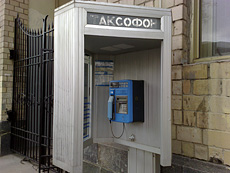 |
 |
(+)
maximize, 2592õ1944, JPEG |
IXUS (+)
maximize, 2592õ1944, JPEG |
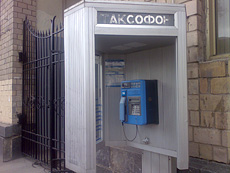 |
|
E90 (+)
maximize, 2048x1536, JPEG |
|
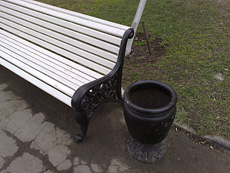 |
 |
(+)
maximize, 2592õ1944, JPEG |
IXUS (+)
maximize, 2592õ1944, JPEG |
 |
|
E90 (+)
maximize, 2048x1536, JPEG |
|
 |
 |
(+)
maximize, 2592õ1944, JPEG |
IXUS (+)
maximize, 2592õ1944, JPEG |
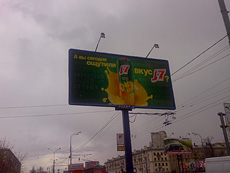 |
|
E90 (+)
maximize, 2048x1536, JPEG |
|
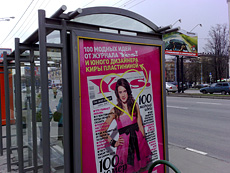 |
 |
(+)
maximize, 2592õ1944, JPEG |
IXUS (+)
maximize, 2592õ1944, JPEG |
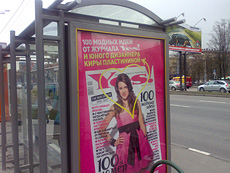 |
|
E90 (+)
maximize, 2048x1536, JPEG |
|
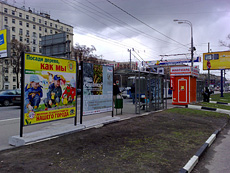 |
 |
(+)
maximize, 2592õ1944, JPEG |
IXUS (+)
maximize, 2592õ1944, JPEG |
 |
|
E90 (+)
maximize, 2048x1536, JPEG |
|
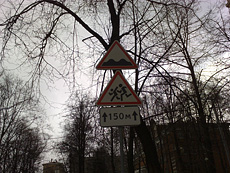 |
 |
(+)
maximize, 2592õ1944, JPEG |
IXUS (+)
maximize, 2592õ1944, JPEG |
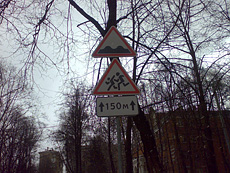 |
|
E90 (+)
maximize, 2048x1536, JPEG |
|
 |
 |
(+)
maximize, 2592õ1944, JPEG |
IXUS (+)
maximize, 2592õ1944, JPEG |
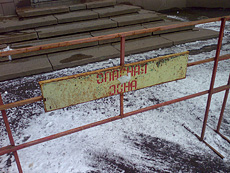 |
|
E90 (+)
maximize, 2048x1536, JPEG |
|
Built-in graphics editor. Any shot can be edited, enhanced with color effects, have contrast and sharpness changed or ClipArt objects applied, and so on. All in all it is a small editor for getting your shots, snapped by the N95, in order.
Gallery. Photos and videos can be viewed from the animated Gallery, and should you have much content stored in here, it will need some time to render all thumbnails. You can start a slide-show and set any background music you like.
Video
The handset is capable of shooting video in a number of quality modes, with the best one putting up 30 frames per second at 640x480 (VGA resolution). But you always can reduce the FPS rate to 15 or get the resolution lower. All clips are captured in MPEG4, at that you can record sound simultaneously. The default storage place for video clips is the memory card, though you can easily switch it to the handset’s own memory. Any clip can’t run longer than 60 minutes, but in truth before the battery goes down, you will be able to record from 40 to 50 minutes of video, as in video mode Nokia N95 is extremely power-hungry. While shooting you can take advantage of digital zoom (x8), and disable sound, in case you don’t need it.
Similarly to stills, here you can setup white balance, apply color effects, though the available scene modes form a list with two options – auto and night mode.
Now on to the video samples we took in maximum quality – they are good enough for a mobile device and as of today remain unrivaled. Quality sound recording is worse than that on Nokia N93, yet matches Nokia N93i.
Video sample 1 (mp4, 8.6 Mb)>>>
Video sample 2 (mp4, 3.8 Mb)>>>
Video sample 3 (mp4, 5.8 Mb)>>>
Video sample 4 (mp4, 6.9 Mb)>>>
Video editor. Like the image editor that comes installed on the N95, the handset sports an editor for video clips. This unsophisticated application allows composing videos of your own by merging a number of clips, adding the transition effect at stitches, or including subtitles. While everything looks pretty simple, the Video editor enables you to get some interesting clips in the end. This feature is not meant for the mass market, yet the manufacturer himself doesn’t think so either.
General impressions
If we just abstract away from other departments of the handset and spotlight the camera alone, then it will turn out that it doesn’t look like a strong competition to relatively cheap digital compacts. For 250 USD you can get a more fetching device that will take even better shots. However, no digital camera can make calls, and that’s the sticking point. In this respect, the N95 should be regarded as a cross of various technologies. Thus if you don’t expect something out of this world from its camera and occasionally use it for small-time shots, you will be as content with the quality, as you have never been.
Speaking of handsets, Nokia N95’s camera is getting a counterpart only in September with the release of the Sofia by Sony Ericsson. Similarly-sized casing packs a number of improvements upon the previous CyberShot solutions and a big focus on music (Walkman 3.0 and this won’t be a smartphone). The two products are separated by a huge time gap, thus even in future there won’t be much sense in putting them face to face due to different positioning, price and abilities. Sony Ericsson’s solution won’t be that expensive, though it is slotted only for now-too-far-off September. There is no surprise that the magic of 5 Mpix will force most portals to figure out which one is the best snap-taker, but as to me, this will be of almost no real use.
It is important to realize that much like Nokia 7650 in its time, this Nokia’s solution is only first of the kind. The second wave will sport a couple of offerings with 5 Mpix camera units onboard and some downgraded specifications. In a year’s time we will see the third wave comprising handsets with exactly the same modules as that found in Nokia N95. As of today, the camera built in Nokia N95 is the mass market’s best proposal (leaving out all exotic devices). Though there is no point in going for it just for the sake of its camera, as a digital compact will be a smarter choice. But if camera is one of the items on your lengthy wish list, then you definitely should read the next part of the review that should be released at Mobile-Review.com shortly.
Review of GSM/UMTS-smartphone Nokia N95. Music>>>
Eldar Murtazin ([email protected])
Translated by Oleg Kononosov ([email protected])
Published — 11 April 2007
Have something to add?! Write us... [email protected]
|
News:
[ 31-07 16:21 ]Sir Jony Ive: Apple Isn't In It For The Money
[ 31-07 13:34 ]Video: Nokia Designer Interviews
[ 31-07 13:10 ]RIM To Layoff 3,000 More Employees
[ 30-07 20:59 ]Video: iPhone 5 Housing Shown Off
[ 30-07 19:12 ]Android Fortunes Decline In U.S.
[ 25-07 16:18 ]Why Apple Is Suing Samsung?
[ 25-07 15:53 ]A Few Choice Quotes About Apple ... By Samsung
[ 23-07 20:25 ]Russian iOS Hacker Calls It A Day
[ 23-07 17:40 ]Video: It's Still Not Out, But Galaxy Note 10.1 Gets An Ad
[ 19-07 19:10 ]Another Loss For Nokia: $1 Billion Down In Q2
[ 19-07 17:22 ]British Judge Orders Apple To Run Ads Saying Samsung Did Not Copy Them
[ 19-07 16:57 ]iPhone 5 To Feature Nano-SIM Cards
[ 18-07 14:20 ]What The iPad Could Have Looked Like ...
[ 18-07 13:25 ]App Store Hack Is Still Going Strong Despite Apple's Best Efforts
[ 13-07 12:34 ]Infographic: The (Hypothetical) Sale Of RIM
[ 13-07 11:10 ]Video: iPhone Hacker Makes In-App Purchases Free
[ 12-07 19:50 ]iPhone 5 Images Leak Again
[ 12-07 17:51 ]Android Takes 50%+ Of U.S. And Europe
[ 11-07 16:02 ]Apple Involved In 60% Of Patent Suits
[ 11-07 13:14 ]Video: Kindle Fire Gets A Jelly Bean
Subscribe
|
